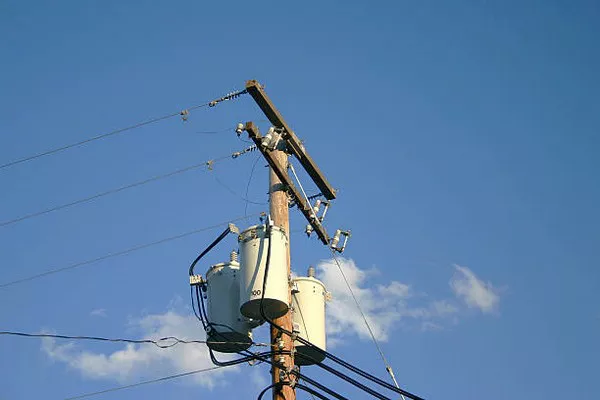Transformers are fundamental components in electrical systems, essential for voltage transformation and distribution. They come in various types and configurations to meet different energy transmission requirements. Two primary classifications are single phase and three phase transformers, each serving distinct purposes based on the specific needs of electrical networks. This article delves into the differences, applications, and operational characteristics of single phase and three phase transformers, providing a detailed exploration of their roles in power distribution.
Overview of Transformers
Transformers facilitate the transmission of electrical power by transforming voltage levels between primary and secondary circuits. They operate on the principle of electromagnetic induction, where alternating current (AC) in the primary winding induces a voltage in the secondary winding through mutual induction. This transformation allows efficient transmission of electricity over long distances and enables compatibility between different voltage systems.
Single Phase Transformers
Construction and Configuration: Single phase transformers consist of two windings wound around a common magnetic core. The primary winding receives AC voltage from the source, creating a magnetic flux in the core, which induces a voltage in the secondary winding. The windings are typically insulated copper wires wound to achieve the desired voltage ratio.
Operation: In operation, alternating current flows through the primary winding, generating a magnetic field that induces a corresponding voltage in the secondary winding. The ratio of turns between the primary and secondary windings determines the voltage transformation ratio. Single phase transformers are commonly used in residential and small-scale commercial applications where the load demands are relatively low and where single phase AC power is sufficient.
Applications: Single phase transformers are ubiquitous in household appliances, lighting circuits, and small-scale industrial equipment. They are also used in telecommunications equipment, where isolation and voltage transformation are necessary to maintain signal integrity and safety.
Advantages:
- Simplicity: They are straightforward in design and operation.
- Cost-Effectiveness: Lower initial cost compared to three phase transformers.
- Widespread Availability: Easily obtainable due to their common usage in residential and small commercial settings.
Limitations:
- Limited Power Capacity: Suitable for lower power applications; larger capacities require multiple units.
- Efficiency: Can be less efficient compared to three phase transformers for large-scale power transmission.
Three Phase Transformers
Construction and Configuration: Three phase transformers consist of three primary and three secondary windings arranged in a variety of configurations, such as delta (Δ) or star (Y). The windings are wound around a shared core to facilitate efficient energy transfer between phases. This configuration allows for simultaneous transformation of three-phase AC power.
Operation: In operation, each phase of the primary winding carries alternating current with a phase difference of 120 degrees between them. This arrangement ensures a continuous and balanced power supply to the secondary windings, resulting in a smoother output compared to single phase transformers. The secondary windings deliver three-phase AC power to industrial motors, large-scale machinery, and other high-power applications.
Applications: Three phase transformers are indispensable in industrial settings where high power transmission is required. They are used in factories, power plants, mining operations, and large commercial buildings to efficiently distribute electricity across extensive networks. The balanced nature of three-phase power reduces voltage fluctuations and ensures stable operation of heavy machinery.
Advantages:
- Higher Efficiency: More efficient for transmitting large amounts of power over long distances.
- Compact Size: Can handle higher power ratings in a smaller footprint compared to single phase units.
- Stable Power Supply: Delivers smoother power with reduced voltage fluctuations.
Limitations:
- Complexity: More complex to design, install, and maintain compared to single phase transformers.
- Higher Cost: Initial cost and maintenance expenses are generally higher due to their larger size and complexity.
Comparison and Selection Considerations
Voltage Levels: Single phase transformers are suitable for applications where the power demand is relatively low and where single phase AC distribution is sufficient. They are commonly used in residential buildings, small businesses, and light industrial settings. In contrast, three phase transformers are essential for industries requiring high power transmission and where stable three-phase AC power is necessary to operate heavy machinery efficiently.
Power Efficiency: Three phase transformers offer higher efficiency and better performance for large-scale power distribution due to their balanced load distribution and reduced losses. This makes them ideal for industrial applications where continuous and reliable power supply is critical.
Cost and Installation: Single phase transformers are generally more cost-effective and easier to install in smaller applications due to their simpler design and lower initial investment. Three phase transformers, while more expensive upfront, offer cost savings in the long run through improved efficiency and reduced operational losses.
Space and Size Requirements: Three phase transformers are more compact for the power they handle compared to single phase transformers, making them advantageous in situations where space is limited or where multiple units would be required.
See Also OLD TRANSFORMERS: PRACTICES FOR DISPOSAL, RECYCLING & REUSE
Conclusion
Understanding the differences between single phase and three phase transformers is essential for designing and implementing efficient electrical systems. Each type has its unique characteristics, advantages, and limitations, which should be carefully considered based on the specific requirements of the application. Single phase transformers are ideal for residential and light commercial use, offering simplicity and cost-effectiveness. In contrast, three phase transformers excel in industrial settings, providing higher efficiency and stable power distribution for heavy-duty machinery and large-scale operations.
By choosing the appropriate transformer type based on power requirements, efficiency goals, and operational needs, engineers and electricians can ensure optimal performance and reliability in electrical systems. Whether for powering a home, operating manufacturing equipment, or distributing electricity across a city grid, transformers play a crucial role in modern infrastructure, enabling the efficient transmission and utilization of electrical energy.

